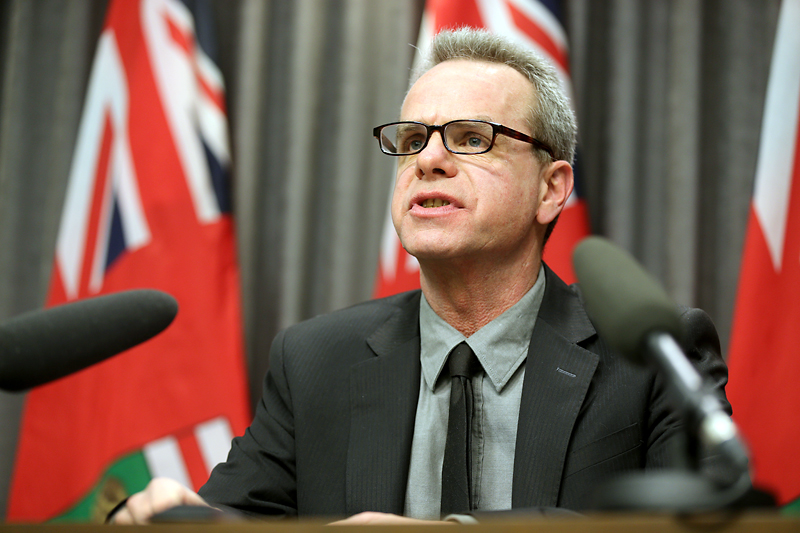Republished from the Brandon Sun print edition October 11, 2014

Learning benchmarks for Manitoba students should always be front of mind for school boards across this province.
That said, we are in challenging times for educators — which is why this week’s release of a study by the Pan-Canadian Assessment Program stating Manitoba students were at the bottom of the class for various disciplines set the government a-whir with spin doctoring.
The study, which was completed in 2013, reflected on the skills of 32,000 Grade 8 students nationwide and ranked Manitoba students last in mathematics, science and reading — a revelation that had Manitoba Education Minister James Allum proclaiming that there is an “education gap” in Manitoba.
Allum in the past has been known for politicking with the numbers of various education-based studies. But on this one, at least, the NDP — much like the Brandon School Division trustees — were ready for the pitch before it ever crossed the plate.
The numbers, which do not paint the rosiest picture for learning in Manitoba, need to be taken with a grain of salt.
As much as the numbers coming from Manitoba middle school students are alarming, they only reflect a small portion of the population of students in our school system and are a snapshot at best of specific learning outcomes for students.
It did not take long, however, for the government to roll out the latest action plan, a five-pronged document meant to “close the gap” the Allum had alluded to earlier.
As has been the case with other trip-ups by this government, the Progressive Conservatives were quick to chastise but were short on offering any real solutions of their own to rectify what they see as a pressing issue in the province. So, little ink should be spilled on politicking of that nature.
Officially, Allum would note that 86 per cent of the province’s students meet or exceed the level of success on standardized testing. It is the 14 per cent he is focusing on through the province’s new strategy, which includes helping better prepare students for taking tests as well as “loading up” on supports for parents and teachers.
The strategy does make sense from a government and political standpoint, but in all reality fails to differ from past plans — such as the 2011 NDP platform with which they hoped then to close this same gap.
Realistically we live in a province, and especially a community, where a myriad of other challenges face our educators every day — challenges that may skew these results.
Many Manitoba school divisions battle social and language barriers, chronic absenteeism, parental and guardianship issues and most of all poverty — all of which weigh heavy on a student’s ability to succeed on a daily basis.
Any single one of these can affect a student achieving learning objectives, but in some cases, Manitoba students are afflicted with a handful of these and other challenges.
Our educators perform an admirable job in meeting the challenges they face on a daily basis, especially those at the early years level where chronic poverty and malnourishment weigh heavy on the basic needs of children in our school system.
Manitoba ranks second highest in child poverty in this country, and until there is a concrete plan to change that, it will be difficult to see growth from students on standardized testing scores.
However, the lower-than-average scores cannot be pegged on poverty alone. There is an overarching layer that persists here that Allum hoped to address by training students for standardized testing.
This is not the best option though, and is superficial at best, as the basic core skills needed to succeed appear to become secondary to the goal of better equipping students for standardized testing.
It is a stop-gap solution and shows poorly on a government more intent on solving the issue to garner positive media coverage, as opposed to drumming down to the root of the problems that make learning difficult for a portion of our population.
The policy and ideas to combat low testing scores in the province, as they stand currently, need some work — and Allum and the NDP need to dig a bit deeper rather than dusting the surface with improved practice for standardized testing.
Snapshot tests like these have so little impact on the real world after school they should be scrapped.
Perhaps instead of finding ways to better equip students to pass standardized tests and boost numbers, the government should focus more on putting resources where they are needed most — in the hands of the educators preparing our youth for the future.





Social Profiles